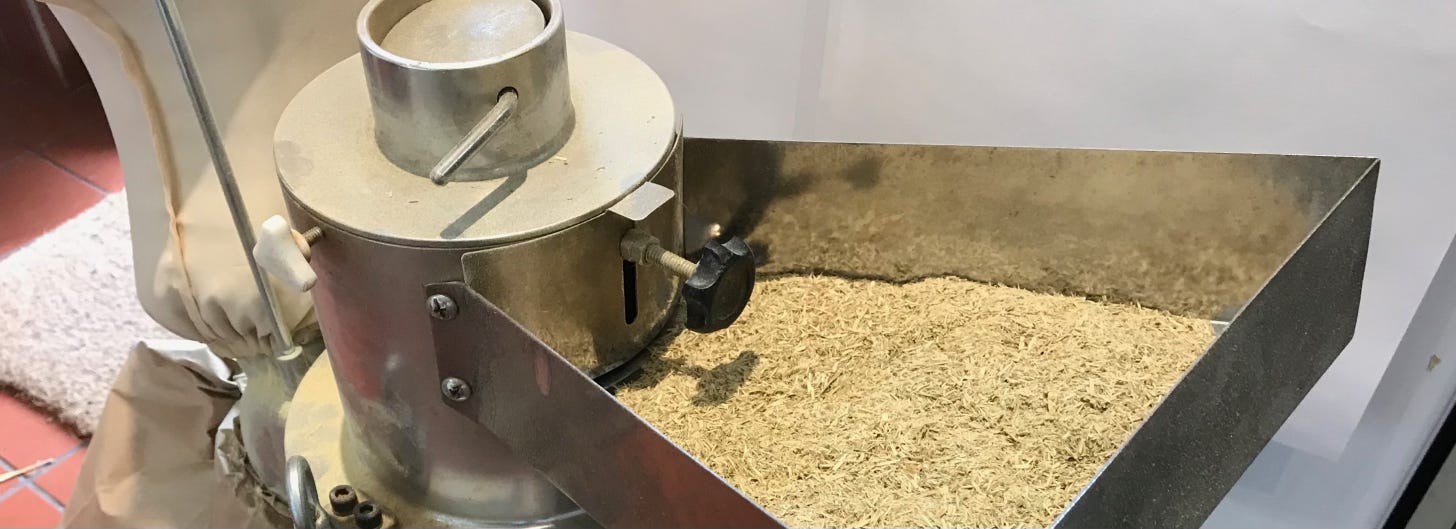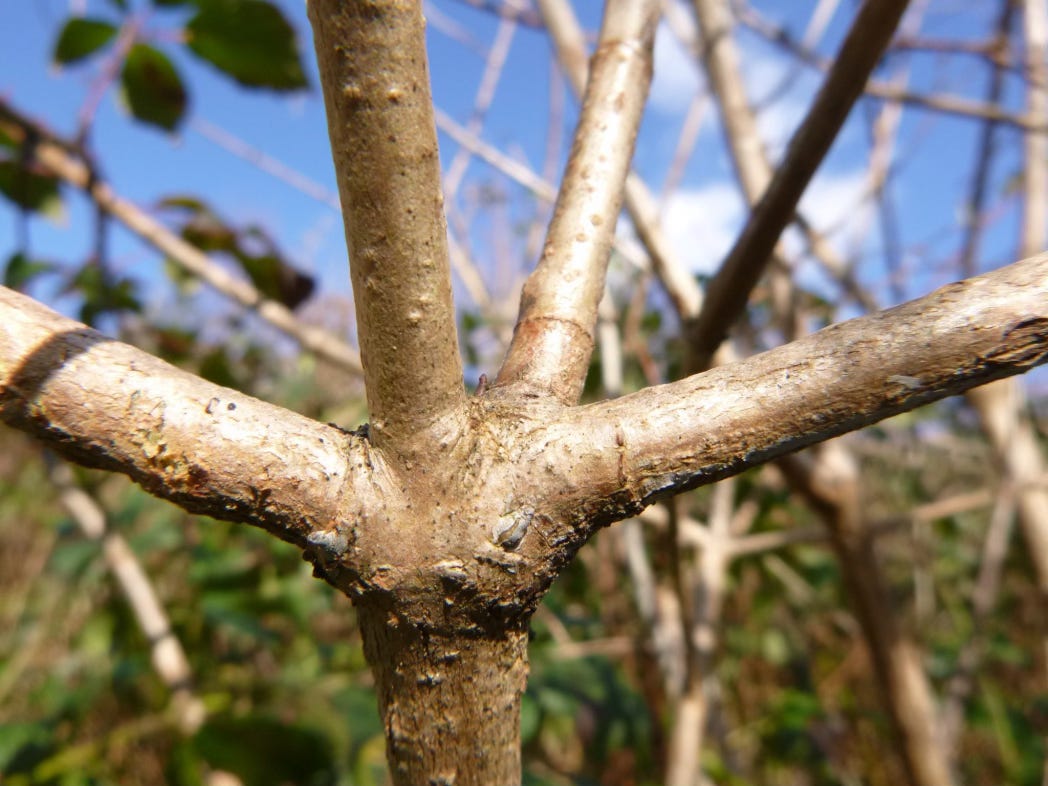MAKING RECIPES #9 Growing and using medicinal tree bark
Sustainable barks to grow and harvest, with powdering and recipe suggestions for health
NOTE I am celebrating more than doubling the list of subscribers in the 12 months since I began writing as Medicinal Tree Woman. So, this latest post in my paid subscription series MAKING RECIPES# is free to everyone !!
In my last post I wrote about several tree barks and their uses and outlined recipes for buckthorn and cherry bark along with simple ways to grind dried bark. In this post I describe more tree bark species and their sustainable uses for health and skin care, from pine to cramp bark, willow to witch hazel bark. From capsules to tinctures, the herbal actions of medicinal tree barks can be relevant in many complaints from simple constipation to chronic arthritis, from menstrual cramps to combatting infection. Here I focus more closely on how to powder bark finely using a hammermill grinder and the advantage this allows to make preparations such as capsules and pills.
This post is part of the MAKING RECIPES # series. All of my other posts are available free to all subscribers. The MAKING RECIPES # series for paid subscribers aims to give my inside story as a herbal practitioner based on growing, harvesting, making, preserving, selling healing remedies and body care products from the medicinal forest garden. Paid subscriptions also support me in developing the Medicinal Forest Garden Trust website to promote sustainable cultivation of trees and shrubs.
The potential of tree bark for health
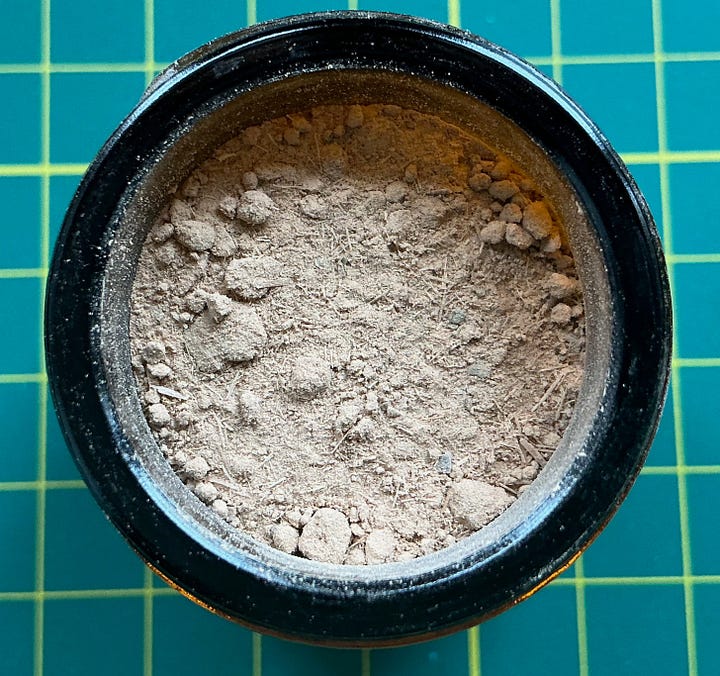
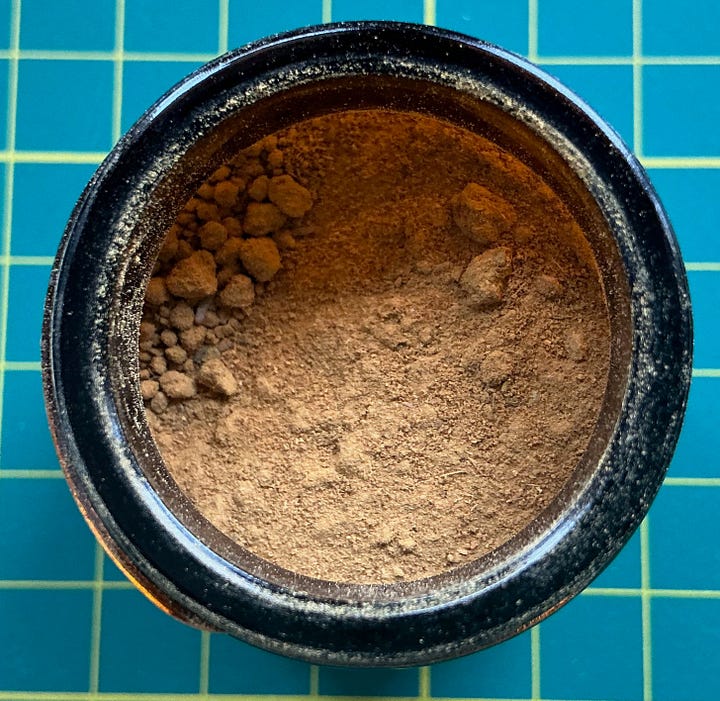
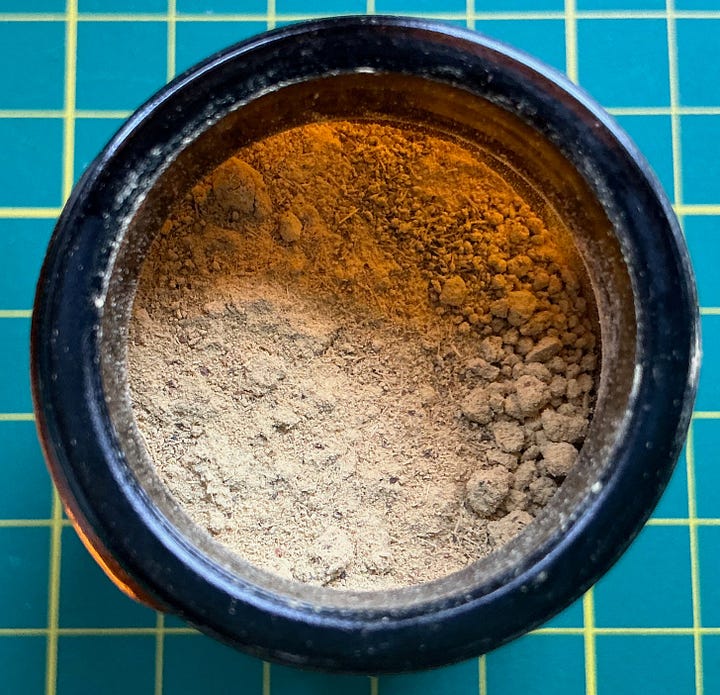
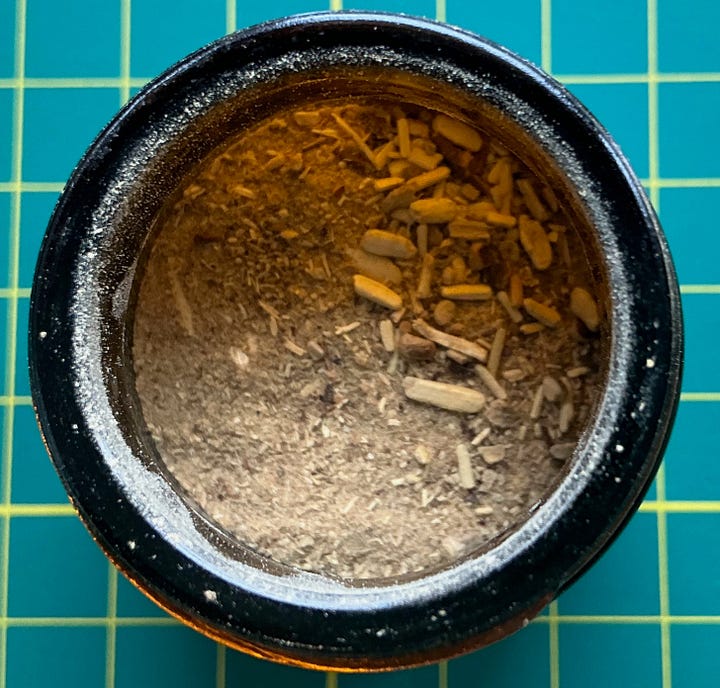
Tree barks offer a range of herbal actions, including anti-inflammatory, antimicrobial, antioxidant, antiseptic, antispasmodic, astringent, laxative and stimulant effects. From a medicinal perspective, tree barks contain many useful constituents, including tannins, alkaloids and aromatic resins. For example, birch bark (Betula spp.) contains betulin, a pentacyclic terpene, recently researched for anti-tumour activity. Cramp bark (Viburnum opulus) contains scopoletin, a coumarin, and viopudial, a sesquiterpene, giving anti-spasmodic activity. Prickly ash bark (Zanthoxylum americanum) contains alkylamides and terpene alcohols which provide antibiotic and stimulating effects. Willow bark (Salix spp.) contains bitter-tasting salicin, a phenolic glycoside, which acts to provide anti-inflammatory pain relief in the body: the original natural form of aspirin-like constituents.
A number of shrubs also have useful constituents in their bark. Barberry and oregon grape (Berberis species) have stem and root bark containing berberine, an isoquinolene alkaloid, with antibiotic and anti-inflammatory properties. Research has shown that berberine also lowers blood sugar and may suppress cancer cell growth (you can find further references supporting these findings for 80 tree and shrub species in the link at the end of this post).
Antiseptic pine bark for colds
Pine trees (Pinus species) offer a fantastic source of antiseptic and anti-inflammatory bark. There are many species of pine, so it is possible to find one to suit most cultivation conditions. Sometimes wind will bring down branches which can then be harvested for needles and bark. Pine bark has a market as a commercial herbal supplement high in polyphenols for anti-inflammatory purposes such as the Pycnogenol extract from French pine (Pinus pinaster) sold for arthritis. Pine bark and needles can be used as an infusion in hot water to provide a steam inhalation in colds and coughs.
Antispasmodic cramp bark for period pains
Cramp bark is also known as the snowball tree or guelder rose (Viburnum opulus) and is a small tree with large panicles of white flowers and red fruits. The constituents of the bark provide an antispasmodic effect which is very useful for symptomatic help for colicky or cramp-like pains. The dried and finely powdered bark can be taken in capsules made with a simple capsule filling machine. These are much easier to swallow since the bark is intensely bitter. A syrup or tincture can be made from the bark, or alternatively try these handmade pills.
Recipe for Cramp Bark Honey Pills
2 tbsp cramp bark (Viburnum opulus) finely ground powder
1 tbsp runny honey
liquorice powder (or caster sugar)
Put the bark powder in a basin and gradually incorporate the honey. Keep adding until everything clumps together (this can be hard work but avoid temptation to add extra honey). Roll out into a long thin pencil-width shape. Cut 0.5 cm width pieces and shape into balls. Roll in the liquorice powder and then store in an airtight container in a cool dry place. Keeps for up to 12 months, take 3-4 every 2 hours for menstrual cramps. Note that these pills, despite the honey, still taste very bitter.
Anti-inflammatory willow for arthritic pain
Willow (Salix spp.) family members are rich in salicylates, and this content can be identified in the bitter tasting bark. Darker willow stems often indicate the higher salicin content and this is broken down in the body to give salicylic acid, with anti-inflammatory effects. There are other constituents, and it is likely the painkilling effects are due to a synergy of many components, The willow remedy is NOT the same as aspirin which is a single molecule artificially prepared and can have irreversible effects on the stomach lining if not taken with food. This gives aspirin its position as one of the most dangerous over-the-counter medications if a stomach bleed is caused. Fresh willow bark can be chewed, though it is intensely bitter and can cause digestive upset, and an alternative is to decoct the bark. The bark can be dried and powdered for use in capsules or to make alcohol and water tincture.
Make a pain relief decoction
Fresh bark can be chopped and boiled in water for 10 minutes to make a decoction. For example, to make willow bark decoction for inflammation: pour a mug of water onto 1-2 tsp of chopped fresh bark, bring to the boil and simmer for 10 minutes, drink up to three times per day. Dried bark needs to be decocted for longer, say 20-30 minutes, and half to one teaspoonful of powdered bark is enough per mug.
Using a hammermill to powder herbs




To enable powdering of herbs suitable for filling capsules it is important that grinding is done in stages, reducing dried material to a rough cut and then further to a fine powder. This can be done using a hammermill grinder which forces the plant material through screens with smaller and smaller perforations. A heavy-duty machine is suitable for long runs with a continuous feed for powdering dried bark, leaves or roots. At Holt Wood we used a FDS Continuous Feed Powdering Machine, originally supplied by Mayway Herbs, California, USA. Similar machines can be found through an Internet search (but check that the supplier can offer spares in case there is a need to replace parts such as the screens). The screens come with different aperture sizes, and this enables particle size to be reduced in stages without overheating the plant material.

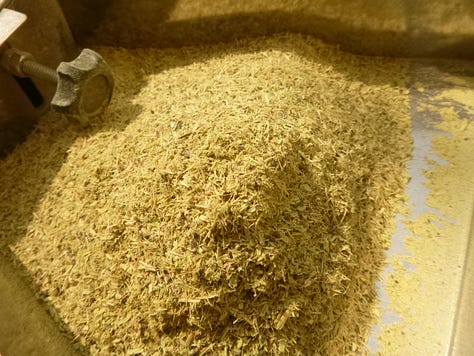

Powdering of herbs should always be done in a well-ventilated area as dried herbs can produce a lot of dust! Protective equipment may be necessary for processing of herbs, to avoid dust inhalation and irritants to the skin and eyes. Flexible leather gloves with long cuffs are suitable for handling and for rubbing herbs. A dust mask, such as a disposable paper mask used in building and decorating, is probably suitable for working with most dried herbs. Ear protection may be needed if machinery is used. Take particular care with machine use and use a wooden tool rather than fingers to push herbal material through the machine. Once you have a fine powder, then it can be used for filling capsules. Empty vegan capsules can be purchased by the 1000, and a small capsule handfiller will enable making 50 capsules at a time. The process involves (a) separation of top and bottom parts of the empty capsules (b) filling the bottom capsule parts with powder and (c)replacing the capsule tops.
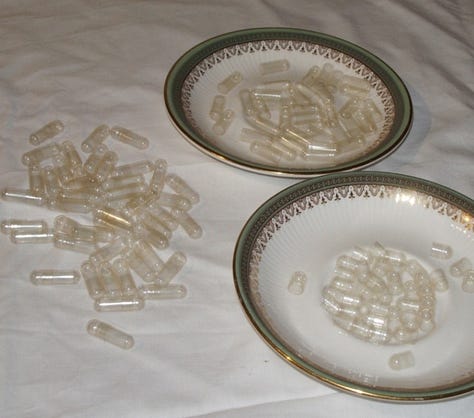

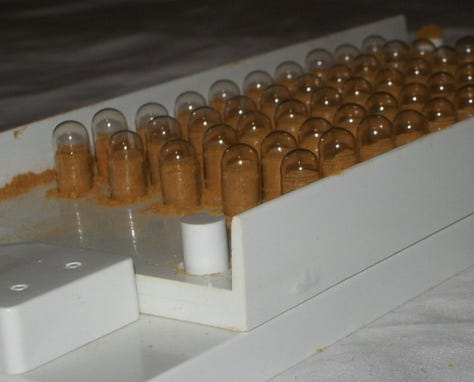
Medicinal bark - suggestions for skin care
Tree bark can also have uses in skin care. For example, pine bark can be infused in oil to provide gentle anti-inflammatory and antiseptic effects for the skin. Another recipe for a hair and beard oil incorporates some anti-inflammatory prickly ash bark.
Rosemary and Willow Hair and Beard Oil
250 ml sweet almond oil
250 ml grapeseed oil
30 g rosemary (Salvia rosmarinus) leaves, dried
30 g willow (Salix species) leaves, dried
15 g prickly ash (Zanthoxylum americanum) bark powder
Mix the sweet almond and grapeseed oils in a bain marie. Add the leaves and powder and stir in. Heat gently and simmer for 40 min. Then press and strain the oil off through a cloth and bottle and label. Keeps up to 6 months. This is a useful oil to moisturise and condition scalp and hair.
Some extracts can be based on twigs rather than stem bark
Another way to use tree bark is to distil it and obtain essential oils and aromatic waters or hydrosols. The bark of the Virginian witch hazel (Hamamelis virginiana) is distilled in North America for worldwide use in eye and skin care. Often, this small tree is pulled whole from oak forests and entirely chipped, and then distilled for up to three days. Alternatively, it could be harvested for leafy twigs to be distilled in small batches which is a more sustainable mode of production. The distilled water is anti-inflammatory and astringent, and it has many body care uses from eye drops to first aid for insect bites and sprains. As a toning and drying lotion, it can be helpful in acne too.
Sustainability and coppicing
Often under-recognised, tree and shrub barks offer many useful herbal healing actions, and they can be harvested in sustainable ways. An exciting way forward is to explore how coppicing or cutting to the ground encourages trees and shrubs to throw up young stems ideal for the harvest of bark. Other methods include pollarding at a higher level or simply pruning selected branches on a regular basis. I hope these posts have provided insight as to how some barks can be used and encourage you to view these amazing medicinal tree barks in a new light!
References
Here below are just a few sample research references on bark, but you can download for free 500 references covering 80 medicinal trees and shrubs at the Medicinal Forest Garden Trust website. CAUTION as the download is lengthy and not bedtime reading!
Piątczak E, Dybowska M, Płuciennik E, et al. (2020) Identification and accumulation of phenolic compounds in the leaves and bark of Salix alba (L.) and their biological potential. Biomolecules 10(10): 1391.
Robertson NU, Schoonees A, Brand A, et al. (2020) Pine bark (Pinus spp.) extract for treating chronic disorders. Cochrane Database Syst Rev 9: CD008294.
Tanase C, Cos S and Muntean D-L. (2019) A critical review of phenolic compounds extracted from the bark of woody vascular plants and their potential biological activity. Molecules 24: 1182.
Telichowska A, Kobus-Cisowska J and Szulc P (2020) Phytopharmacological possibilities of bird cherry Prunus padus L. and Prunus serotina L. species and their bioactive phytochemicals. Nutrients 12(7): 1966.



